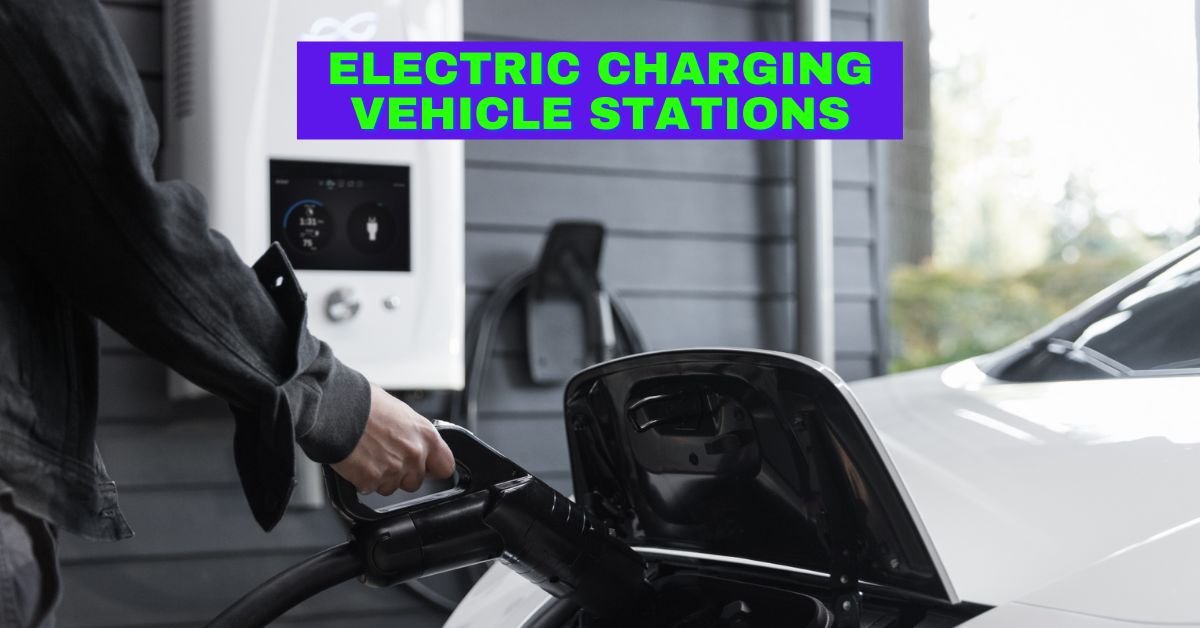With the rise of electric vehicle (EV) use and the introduction of a number of different charging options, many people are wondering how we will keep up with this new trend.
Electric Charging Vehicle Stations (ECVS) are an important part of the future of EV use and do not require any new infrastructure. With ECVS, there is no need for a specific location to charge your car, as they can be installed anywhere. Here’s some more information on ECVS and why they’re so great!

Electric Charging Vehicle Stations
Electric charging vehicle stations are becoming increasingly common, but they are still limited to a few select locations. Public charge stations deliver Level 2 power, while workplaces and government offices typically offer Level 3 stations.
Although the latter is more powerful, they are not as convenient or widespread as Level 2 chargers. You can use the EV Charging Map to locate a nearby charging station. For more information, visit the Gravity website. The company hopes to expand its network of EV charging stations across the country.
Public charging stations are a good place to start if you’re a new driver. There are many public charging stations in California. There are a total of nine EV charging stations in San Diego.
These can be found at retail shopping malls, government buildings, and street sides. The public charging stations are usually equipped with multiple connectors, so drivers can connect as many electric cars as they want. Some of them are available in different locations.
Public charging stations are the best option for those who need to charge their vehicles frequently. Unlike home charging, these public charging stations are designed for multiple electric cars. They are usually street-side and can be found in government facilities, retail shopping malls, and other public locations.
There are multiple charging standards, and some vendors provide proprietary technology. The public charging stations are generally free to use, and most of them are designed to accommodate a variety of different electric vehicle types.
Chargers for electric cars can be divided into two categories: level one and level two. The latter has a higher charging capacity than level 1, and can also recharge up to 80% faster than level three.
Both are great for homeowners who want to take advantage of fast and convenient electric charging. These are especially helpful if you travel a lot, or if you simply don’t have time to recharge during the day.
Electric charging vehicle stations are accessible to multiple electric vehicles. Typically, these stations include current and connection sensing mechanisms. These devices detect the electrical current, which will allow them to know if they are working properly. The sensors will also allow you to monitor the electricity used by the electric vehicle.
Most electric charging vehicle stations have a Level 2 charger, but it’s important to note that a Level 3 station requires a level 2 connection to be compatible with a Level 2 station.
If you’re not looking to pay for EV charging, you can install one yourself. A simple installation of a DC fast charger can easily cost up to $15,000 and can be very expensive. Therefore, it is worth the investment to have a high-quality EV charging station.
A good way to start reducing the cost of electricity is to use public and private EV charging stations. If you’re not sure if a public or private charging station is available, you can suggest it in the Alternative Fueling Station Locator.
While charging stations come in a variety of designs, the most common ones are designed for multiple electric vehicles. They have different plug types and provide different charging rates. EVSEs are classified into two main categories: level 1 and level 2 chargers.
If you’re looking for public and private charging stations in your area, look for a station with a level 1 charger. Generally, a level 2 charger is the fastest of the two.
Electric charging vehicle stations typically have two types of EVSEs: level one and level two. The first type is a 120-volt AC plug. It uses a dedicated circuit for charging and offers five miles of range per hour.
The second type is 240V AC plugs. You can find both kinds of EVSEs. You can also use the same level 2 charging station in your home. A public charger may be cheaper, but a level one has more features.
Level 1 and level two charging stations have different charging rates. A level one station has a 120-volt (V) AC plug. It will be a Level one station. A public charging station will use a 240-volt AC plug.
A level two charger requires a dedicated circuit and will give you ten to twenty miles of range per hour. A level two charger is required for charging an electric car. The cost of a level 2 station depends on how many EVSEs are installed.
Read more:
- Best Electric Cars to Buy 2022
- Cheap Electric Vehicle in India 2022
- Benefits of Electric Bike in India 2022
